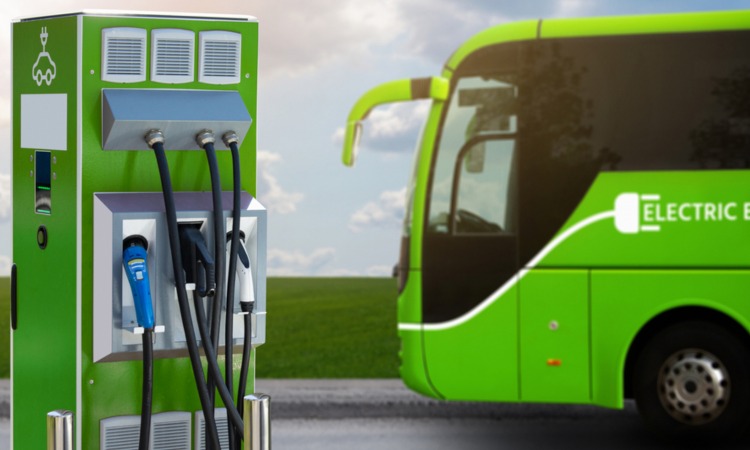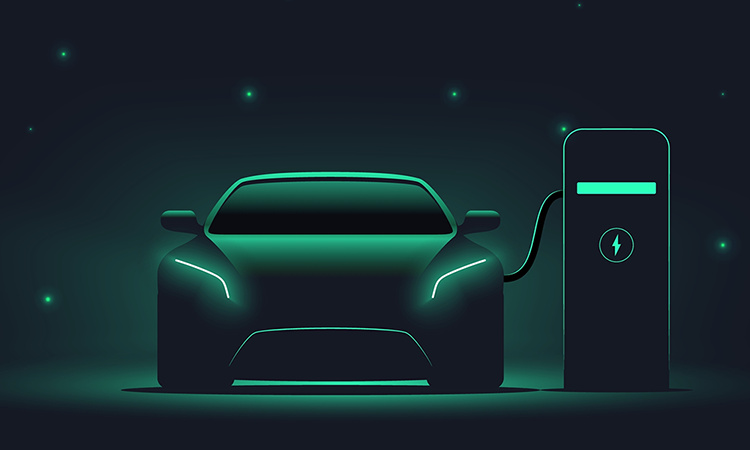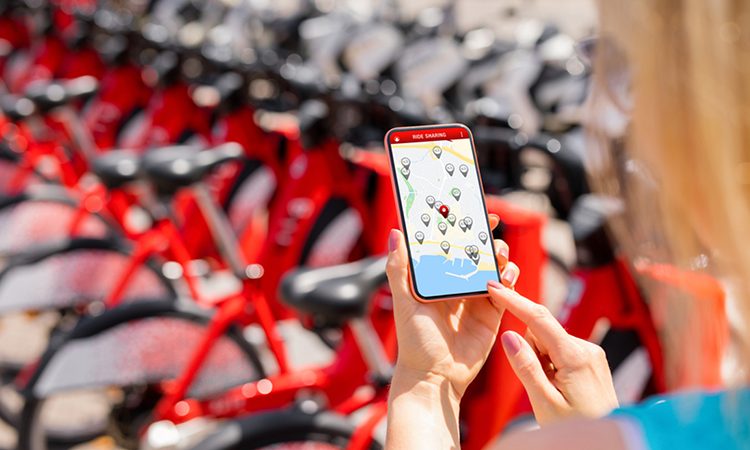Electrifying Oslo: How the Norwegian capital city continues to remain a pioneer in electric vehicle adoption and usage
- Like
- Digg
- Del
- Tumblr
- VKontakte
- Buffer
- Love This
- Odnoklassniki
- Meneame
- Blogger
- Amazon
- Yahoo Mail
- Gmail
- AOL
- Newsvine
- HackerNews
- Evernote
- MySpace
- Mail.ru
- Viadeo
- Line
- Comments
- Yummly
- SMS
- Viber
- Telegram
- Subscribe
- Skype
- Facebook Messenger
- Kakao
- LiveJournal
- Yammer
- Edgar
- Fintel
- Mix
- Instapaper
- Copy Link
Posted: 6 March 2023 | Sara Teige Kalsås - City of Oslo, Sture Portvik - City of Oslo | No comments yet
Here, the City of Oslo’s Manager – Electro Mobility, Sture Portvik, and Mobility Advisor, Sara Teige Kalsås, sat down with Intelligent Transport’s Leah Hockley to discuss the key policies and initiatives that the Norwegian capital has implemented to advance the transition to greener mobility and what makes it unique to cities across the globe, as well as why electrification plays such a key role in improving the city’s air quality and achieving its climate action targets.


Oslo is often described as the electric vehicle capital of the world. Why do you think that is and what is being done differently in Oslo to advance the wider adoption of electric vehicles in comparison to other cities around the globe?
Sture Portvik: I would say the reason why we like to call ourselves the electric vehicle (EV) capital of the world is because no other region on the planet has a higher density of EVs than Oslo. This is evident in the fact that nine out of 10 cars sold so far in 2022 have been electric. So, they are in every corner, on every street, they are everywhere. And, with 32 per cent of the city’s total car fleet being electric, this means that there’s now more electric cars than gasoline cars in Oslo, and that’s fantastic.
But, of course, this was made possible due to our early start. In 2006, we were the first city in Europe to establish curbside charges, as we understood that seeing is believing. We made the benefits of EVs more visible for drivers to encourage them to make that switch. For example, it would be much easier for drivers to find a parking spot with charging for an EV, instead of circling around and trying to find a free parking spot for a standard diesel car. This showed that EVs can save time, and that they’re convenient, practical and visible.
Although it took many years before this really took off – around 2011 – these efforts were a success because the right policy framework was in place: cheap to buy, cheap to use, practical and convenient. But having the right product was also an important aspect. In 2011, for the first time, a decent looking electric car was finally on the market: the Nissan Leaf. Any cars prior to this looked like small, Donald Duck-like cars. And I can say this without offending anybody, as I think they were Norwegian products! But, since the introduction of the Leaf, we’ve seen exponential growth.
However, we wouldn’t be able to achieve this by ourselves, as it was the result of strong collaboration on the broad political settlement in the city. From the left to the right and all political parties in the centre, everyone was on board. This was extremely important, as it meant that we have stability over time. Governments come and go, but the policies stay in place and that’s important, especially for the consumer, as they are making a huge investment, so they need to be sure that what is a good idea today will still be a good idea in three years’ time.
While planning for years and years to figure out the perfect solution may seem like the best idea, it may be more useful to just get right into it and then adapt policies as we go along”
In addition, co-operation between the national and local governments is really important. While the national government helped to make EVs more affordable to buy, the local government – first in Oslo, then others followed – made EVs cheap to use: free parking, free passing through the toll roads in and out of the city, etc. An EV without electricity is not fun, so they also helped to install chargers and make them visible.
Sara Teige Kalsås: Exactly, establishing chargers for EVs is really important, and I think that’s where cities should start. The perfect charging system won’t be created right away, but it’s necessary that cities start installing them. While planning for years and years to figure out the perfect solution may seem like the best idea, it may be more useful to just get right into it and then adapt policies as we go along. This means that, when things aren’t working the way that we may have intended them to, they can be changed to see if it works differently.
Portvik: That’s a very vital point – just do it. Of course, it’s important to keep testing, but it’s equally significant to not think too much, no five- or 10-year plan, because most of the time it doesn’t work. The world is moving so fast, so people need to start somewhere. Start installing chargers, make it a viable choice for people to buy an EV – it shouldn’t be too expensive. Everybody should be able to take part in the green shift and, if authorities have that in place, well, it will work.
I think the approach could be described as ‘thinking while running’. A big, broad thrust of power is required just to break the wall. When there’s enough momentum, just do it. Sometimes we’re running in one direction and then we have to adjust, so being flexible is also essential.
Kalsås: In addition, although it’s important for cities to see what other cities have done, it’s equally as important for them to actually test it out themselves, as every region is different, and people use transport differently. It’s when things are being tested that we can see if it will work or not, or how fast people are adapting to it.


How significant a role does electrification play in improving the City of Oslo’s air quality and achieving its climate action targets?
Portvik: Whilst all of the heating in Oslo’s buildings coming from hydro-power, which is renewable, the electrification of transport plays an equally key role in decarbonising the city. It is also one of the measures outlined in the city government’s 10-point plan to reduce CO2 emissions. This is because 61
per cent of all CO2 emissions in the city comes from transport. So, if we don’t get a grasp of what’s happening in transport and aren’t able to reduce emissions from the sector, there’s no way that change is ever going to come about. And we’re not solely looking at private cars.
We have to think about how we can do things smarter and more cost efficient, but also space efficient, as space is the city’s most significant limitation”
Kalsås: Yes, while private cars may play a role in releasing emissions, this is especially true in terms of freight vehicles. It’s important to electrify them, as well, in order to reduce CO2 emissions and improve air quality, as well as reduce noise pollution. These are all factors that, to a degree, come from the same source. Therefore, it’s important that freight vehicles are addressed to achieve an overall improved city environment.
Portvik: Innovation is always a key factor, because we always have to look at how we do things. Earlier, I mentioned that we’ve adopted the ‘thinking while running’ approach, but we are definitely thinking. We have to think about how we can do things smarter and more cost efficient, but also space efficient, as space is the city’s most significant limitation. Sometimes, wireless fast charging points are needed to reduce the footprint in a crowded city centre.
Do you think that electrification is the key to decarbonising Oslo’s public transport network?
Portvik: Yes – we want to electrify everything. That’s our primary goal.
Kalsås: In 2023, all of the city buses in Oslo will be electric. However, we’re still working on figuring out how to electrify regional buses, as well as how to charge them and time all of the routes correctly. We’re actually achieving this a few years before the agreed target. It’s nice to see that, even though we set ambitious goals, we’ve been successful in reaching them, as well.
Portvik: Furthermore, we are also building some new energy stations, which include hydrogen and electricity. Also, to be realistic, there will be some biogas used for regional buses like Sarah mentioned, as those vehicles travel further distances, especially in the winter. Although we still need them for some years to come, I hope that everything is zero-emission in the foreseeable future.
As Norway’s charging network is so extensive now for smaller vehicles, it really is much easier to have an electric car than to have anything else”
Kalsås: As Norway’s charging network is so extensive now for smaller vehicles, it really is much easier to have an electric car than to have anything else. In terms of larger vehicles, we don’t know how it will develop, but we are making progress.
Portvik: It always makes sense to look at the comparative advantages. So, for small vehicles, like Sarah mentioned, the technology’s faster, there’s better on-board chargers, so the car is able to operate with more efficiency. In addition, the energy efficiency of an electric vehicle will be very difficult for private petrol and diesel cars to compete with. On the other hand, for bigger trucks and the maritime sector, we probably need some additional solutions, even if we have some electric vehicles already. The number of bigger trucks used to consist of six per cent biogas and electricity; however, in 2022 alone, we’ve achieved 27 per cent biogas and electricity. We’ve also seen that the big carriers in the city are transitioning all city logistics primarily to zero-emission electric trucks.
Many of these things are happening years ahead of schedule, and that’s good to see. However, I hope that the energy crisis, and all of the future challenges that could be anticipated or not, doesn’t add to the difficulties. Thus, we try to help the sector with charging infrastructure and consolidation sensors to push them in the right direction, which is zero-emission transport.


You mentioned there the current ongoing energy crisis. Is this something that is a concern in relation to Oslo’s electrification efforts, and have you found that it has impacted zero emission and electric vehicle adoption already?
Portvik: Yes, this definitely raises some concerns. However, the good thing is that, due to this, diesel and gasoline is becoming more expensive. I shouldn’t say this, but I do mean it, because the comparative advantage between zero-emission and fossil fuel should always be in favour of zero-emission solutions, and we have had two green taxes. That’s how it has impacted Norway, but it has been a challenge. Now, if you use a fast charger, it’s just slightly cheaper to use an EV, but 80 per cent of the charging is slow, primarily charging overnight at home. This means that diesel, for the private person or taxi or van driver, is still in favour of electricity. But, of course, high energy prices is not something that people want.
Above all, I hope that the energy mix in Europe will look better, with more renewables, because I think it’s a strong signal to increase the pace of the zero-emission movement, while decreasing the dependency on Russian oil and gas.
What contribution do emerging modes of mobility – such as e-bikes, e-scooters and autonomous vehicles – have in encouraging modal shift?
It’s important that e-scooters, buses, bikes and walking are not competing with each other, but instead complement each other”
Kalsås: In Oslo, we’ve seen a high demand for shared mobility and micro-mobility. So, people use it frequently and enjoy using it. The greatest challenge here is to combine micro-mobility and other types of mobility with the greater public transport network. This means that it’s important that e-scooters, buses, bikes and walking are not competing with each other, but instead complement each other. We want these modes of mobility to combine, so that they can compete with the private car. Thus, creating a more holistic system in terms of public transport and e-bikes, e-scooters, autonomous vehicles, shared bikes and shared cars, which will help to provide a better overall transport network, so that people are no longer dependent on their private cars.
Portvik: Essentially, public transportation is still the king. I hate to say this, as we are promoting EVs, but the official goal of the city is to reduce private car use by 20 per cent by 2025, and we are almost there – it’s at 19 per cent reduction already. So, that shows that it’s possible to have two ideas in the head at the same time.
Kalsås: Yes, we want to reduce the total number of cars, but for all of the cars that are left – no matter if it’s a private car, taxi, or van – they should be electric.


What more needs to be done to ensure a sustainable transport network in Oslo, and more widely throughout Norway?
Portvik: As Sara touched upon before, in Oslo we need more shared mobility, but also the holistic view that public transportation should always be the king, with more cycling and shared mobility solutions complementing it. However, as Sarah indicated, it’s important to assess the things that are being put in place. For example, when we introduce more kick bikes, people tend to use city bike systems a little bit less, as well as, maybe, making fewer trips on the trams. At times, this also leads to people walking less. But, is this something that we actually want?
Therefore, it’s important to have a coherent policy in place. We are increasing where people have to pay to pass along the toll roads in and out of the city, even if they have to pay a little bit at the moment and increasingly so in the future, as we don’t want more cars. So, we need to maintain a delicate balance and also show the alternatives. For example, around 600 of the best parking spots in the city have been converted to car-sharing in the last one and a half years, with plans for 400 more to be replaced.
While we are making these sustainable changes, we also need to consider whether they are just replacing a private car or whether it is, in fact, encouraging people to use it instead of public transportation. That’s something that we don’t want; but, of course, we understand that it may be important to have access to a car when going to IKEA or on a weekend trip, for example. But we also need to test out all of these different types of new technology and transport options that are available.
It’s important to understand nationally that charging systems shouldn’t just stop at the end of the municipal border. Thus, national governments need to see or take the overall responsibility for this”
Kalsås: In addition, more widely through Norway, a national charging strategy or, at least, an overview of how the national charging system should look like for everyone to be able to drive electric cars has been created. There’s still some gaps, where there’s not enough fast chargers or the distance between fast charging stations is still too long. So, I think it’s important to understand nationally that charging systems shouldn’t just stop at the end of the municipal border. Thus, national governments need to see or take the overall responsibility for this.
Portvik: While, in a city, it’s possible to make money out of green solutions, in more rural areas, such as up in the mountains, it is much more difficult. At the moment, fast charging stations are available along national roads, motorways and highways. But the problem is, of course, the more regional, smaller roads. So, there’s still more work to be done, but we are almost there. This is evident in the fact that, even for small islands, far beyond the polar circle, there are electric cars, and even autonomous electric buses.
In simple terms, electric cars are everywhere – not only in Oslo and Bergen, the second largest city, but also across the rest of the country. Nine out of 10 cars sold in Oslo are electric; but, on a national average, it’s eight out of 10. That’s not bad either, so we are getting there.
Kalsås: I think the economic benefits of having an EV is really important for people living in more rural areas, where they may not have access to public transport or a transport alternative at all. In these cases, they sort of need to have a car, so having a zero-emission car, which is also cheaper to use, is beneficial for everyone.
For example, I’m from a small island on the west coast of Norway where a bus comes once every hour. It’s not very efficient to move around the region unless you have a car. Therefore, we need to, at least, provide people with the option to make it easier for them to lower their transport emissions.
It’s important that we don’t see it as you either love the car or you hate it. It should be more about how the car is used, what energy the car uses and where that energy comes from – that really is the key.
Portvik: Yes, exactly. Although we have this luxury of having a good public transportation system in a city like Oslo, with high frequency and good quality, this isn’t the case in our rural areas. So, as Sarah mentioned, sometimes the car is actually the only option. It’s not possible to take a kick bike in -16 degrees snow that goes on for 40km, for example. It won’t work.
In addition, in urban cities, while shared mobility is important, public transportation will be key in reducing the number of cars. Overall, we have a good, well-functioning public transportation network in Oslo, but in some parts of the country, this is not an option.


In five years’ time, what three mobility trends do you hope to see become more commonplace in Oslo?
Portvik: Our number one, of course, is the electrification of all types of vehicles – the big ferries, fast ferries, big trucks, double-decker buses, taxi fleets, all of the craftsmen service vans. Every vehicle everywhere has to be zero-emission, because even if we want to reduce transport, people are buying more and more online and the goods that are delivered to their doorstep are transported using these vehicles. So, what do we do about that? We must meet it with the demands of zero-emission transport. Thus, all of our public tenders will be geared up from 2025, after which everything will need to be delivered with zero-emission vehicles. I think that really helps and pushes the market.
The public transport and shared mobility combination is hopefully something that we’ll see becoming more and more integrated, so that it becomes easier for people to just switch between different types of mobility”
Kalsås: Number two, I think the public transport and shared mobility combination is hopefully something that we’ll see becoming more and more integrated, so that it becomes easier for people to just switch between different types of mobility without having to change to another app or buy another ticket. The more integrated this combination becomes, the easier it will be for people to move around without having to think as much or plan as much, which helps it to become a much more natural option.
Portvik: Yes, it would be great to see the bundling of services with a focus on public transportation. We are very into autonomous solutions at the moment, so it would be even better if autonomous technology is added to that equation. Autonomous buses are brilliant, as they create the opportunity for public transportation on-demand. This type of mobility is linked to more public transportation and more shared mobility. In addition, it reduces the need to bring vehicles from the suburbs into the city center and then having to send them back every day, which really decreases use time.
I want the public to play an active role to make sure that transport on-demand is actually an add-on, a plus in the public transportation system at large. I can see this being especially valuable for elderly people and more vulnerable people who may not be able to walk, let’s say, 15 minutes to the bus stand, but instead could be picked up from home. Public transport or private providers could regulate this, but public transportation on-demand is on my wish list, at least.
Kalsås: Finally, we’d like to see more innovation – all of the cool things that we haven’t even invented yet, and some that are being invented.
Portvik: Yes, like fast wireless charging. Nearly two years ago, we began trialling the first taxi stand with wireless charging. From what we’ve seen, it’s not only saving the footprint and space, but it’s extremely efficient and easy to use, as well as energy efficient. We save around 15 per cent of the energy consumption from the grid to the vehicle by using wireless. This type of charging is actually more efficient than conducted charging with a cable.
In addition, it’s faster, especially when the weather is cold. It is also very simple to use – just put the car in park and the vehicle will begin charging after three minutes. How does it stop charging? Well, when the car drives away, charging is completed – it couldn’t be simpler. We have even put a large ice cube under the vehicle and on the ground to see if it reduced the efficiency, transfer of energy and speed, but it didn’t.
Furthermore, it’s fantastic for people with disabilities, because they don’t have to waste their time trying to access a charger and plug it in when they may be using a wheelchair, for example. While the taxi industry is a little bit more conservative, they are on-board. It’s just very important to show them that there’s no problems when switching to a zero-emission car. That’s important.
We also need to try to find out how fast we can fully charge a big truck – is it possible to make it as fast as filling up a diesel tank? We are still working on that. Moreover, it would be great to increase the deployment of user-friendly things like plug-and-charge. With this solution, people don’t have to think, they don’t need a map and they don’t need a radio-frequency identification (RFID) chip, or anything like that. They just need to plug their vehicle in and then they are registered at once and can go everywhere.
Another aspect of innovation that I would like to see is something like a public bank of battery containers that can be swapped around and used in the city. For example, they can be used for dump trucks on a building site, but also for excavators that are doing work on the same site, in combination. These kinds of solutions are important for us.
Kalsås: I think that would be really important in the years ahead, because the first people who switch to EVs are those who already care about the environment and who want to contribute. So, I think the key to convince people who might not be as engaged in the transition is to make it easy and user friendly, and to also ensure that it makes so much sense that all of the other options no longer seem viable.
Portvik: Some people are thinking with their wallet, and that’s okay – this is where green taxes play an extremely important role. I think it’s all about equity, as we want everybody to be able to take part in the green shift. If people have to pay all taxes similar to a combustion car for a small electric vehicle, then it won’t work, because it’s too expensive for people. But, of course, now the options are there and they are much better. We must make sure that people are paying more taxes for the more polluting products, and this must be balanced, at least in the start. After a while, it’s hard to balance, as people don’t get any revenue because everybody’s buying zero-emission vehicles. However, this is what the goal was, so we can’t complain. Then policies need to be adjusted.




Related topics
Air Quality, Alternative Power, Mobility Services, Public Transport, Sustainable Urban Transport
Issue
Issue 4 2022
Related modes
Bus & Coach, Ride-sharing & Car-sharing
Related cities
Oslo
Related countries
Norway
Related organisations
City of Oslo
Related people
Sara Teige Kalsås, Sture Portvik








